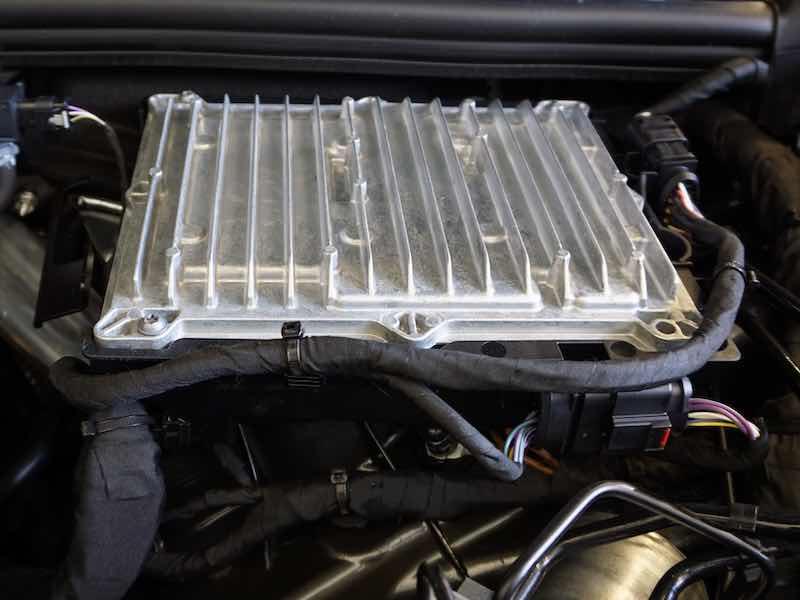Electric vehicles have existed for over 120 years, and throughout the technology's evolution, corrosion to battery compartments, housings, and components has played a pivotal part in vehicle acceptance, performance, and longevity.
 Ted VentrescaFrom the corrosion of metal support brackets and the wooden battery housing of the Baker Electric Automobile (1899-1914) — which were being compromised by acid leaks — to post-war battery housing of steel prone to rust from environmental and acidic electrolyte leaks to the current issues affecting the aluminum housings and components of electric powered land, sea, and air vehicles, mitigating corrosion is a paramount goal of modern EV manufacturers.
Ted VentrescaFrom the corrosion of metal support brackets and the wooden battery housing of the Baker Electric Automobile (1899-1914) — which were being compromised by acid leaks — to post-war battery housing of steel prone to rust from environmental and acidic electrolyte leaks to the current issues affecting the aluminum housings and components of electric powered land, sea, and air vehicles, mitigating corrosion is a paramount goal of modern EV manufacturers.
Aluminum corrosion can affect electric-powered vehicles' performance, safety, and longevity in ways that can be seen or hidden within the vehicle and powertrain.
Corrosion Effects of Aluminum on an EV
Three of the most common corrosion effects of aluminum on an EV are:
- Galvanic corrosion, which can occur when aluminum is in contact with dissimilar and more noble metals like steel fasteners or screws. This can affect the structural integrity of a battery housing or component. Corrosion accelerates in the presence of an electrolyte (e.g., water).
- Corrosion to the battery compartment housing on the underside of vehicles due to chloride-containing road salts used to melt ice and snow, which are highly corrosive to aluminum. The salts can remain on the vehicle for extended periods, especially in hard-to-clean areas, leading to accelerated corrosion. White powdery patches associated with aluminum oxidation have also been found in battery housings of vehicles in coastal regions.
- Inadequate protective coatings or defects in the coating process expose aluminum to environmental factors, leading to rapid corrosion.
Corrosion of aluminum can affect the structural integrity of an EV battery housing. A corroded battery housing may not adequately shield the battery during a collision, increasing the risk of battery damage and potential fires.
Addressing the Issues with eTCP
 CHEMEON eTCP addresses these issues. It is a bare metal conversion coating that acts as a protective layer on aluminum, crucial in preventing corrosive elements from degrading it.
CHEMEON eTCP addresses these issues. It is a bare metal conversion coating that acts as a protective layer on aluminum, crucial in preventing corrosive elements from degrading it.
CHEMEON eTCP is the innovative, best-in-class patented corrosion protection qualified to meet or exceed MIL-DTL standards, delivering optimal bare metal corrosion protection over all existing trivalent chemistry. CHEMEON eTCP is a conversion coating that can be described as forming a passivating layer on the aluminum. This neutralizes corrosive agents and enhances the metal’s natural oxide layer, making it more resistant to further oxidation. eTCP also provides a superior adhesion base for further coatings or paints.
Corrosion can affect the electrical connections within the battery housing. Poor connections can increase resistance, reducing the battery's efficiency and potentially causing overheating. CHEMEON eTCP surface technology corrosion protection provides low electrical resistance on aluminum sheets or components, which reduces electromagnetic interference (EMI). This not only can help maintain battery efficiency and the vehicle's range but also may help mitigate overheating because of corroded battery terminals.
EV manufacturers tend to rely on powder coating, epoxies, and e-coating for use over aluminum elements in a vehicle. It must be noted that conversion coatings, specifically CHEMEON eTCP, powder coatings, and epoxy coatings, each have distinct properties and benefits when used for protecting electric vehicle (EV) battery housings. Understanding their performance, weight implications, and specific applications is crucial for making informed decisions.
Comparison of Coatings
Here’s a comparison of these coatings and insights into their use:
Table 1: Performance Comparison
|
|
Weight |
Corrosion Resistance |
Electrical Insulation |
|
CHEMEON eTCP - MIL-SPEC Conversion Coating |
The application of eTCP as a conversion coating is typically much thinner than powder or epoxy coatings, resulting in a negligible weight increase. This can be a significant advantage in applications where weight savings are critical, such as battery housing. |
CHEMEON eTCP provides excellent corrosion resistance by forming a protective layer on the aluminum surface. They are particularly effective at enhancing the natural oxide layer of aluminum and providing a good base for further coatings or paints. |
The low electrical resistance of eTCP provides a level of electrical insulation, reducing the risk of galvanic corrosion when aluminum is in contact with dissimilar metals and can aid in the mitigation of electro-magnetic interference (EMI) |
|
Powder Coating |
Powder coatings are thicker and heavier than conversion coatings. While they provide mechanical protection and durability, they also add more weight to the battery housing. |
Powder coatings provide a thick, durable barrier that is resistant to moisture, chemicals, and mechanical damage. Without a corrosion protection barrier between the bare metal and powder coat, if the powder-coated top layer layer is damaged or scratched the bare metal below may be prone to corrosion. |
Powder coatings provide electrical insulation, and like conversion coating can reduce galvanic corrosion. |
|
Epoxy Coating |
Like powder coating, epoxy coatings are thicker and heavier than CHEMEON eTCP conversion coating, adding more weight to the battery housing. |
Epoxy coatings are known for their barrier properties, providing resistance to water, salts, and chemicals. Like CHEMEON eTCP they are effective in protecting aluminum from corrosion. |
Like powder coatings, epoxy coatings offer electrical insulation, which is beneficial in preventing galvanic corrosion. |
CHEMEON in the U.S. and Ditrimex throughout Europe provide eTCP to industry, OEMs, and EV manufacturers looking to prevent and mitigate corrosion issues with aluminum EV battery housings, powertrains, and components.
The journey from the Baker Electric vehicle in 1903 to modern EVs highlights significant technological advancement. Modern EVs face complex challenges involving galvanic corrosion and environmental exposure. CHEMEON is committed to continued innovations to improve protective conversion coatings to help OEMs and Tier 1 process partners produce battery housings, powertrains, and parts that result in electric vehicles' longevity, safety, and economic viability.
Ted Ventresca is President and Chief Operating Officer of Chemeon Surface Technology in Minden, Nevada. The company offers a comprehensive line of proprietary and patented metal finishing chemistry and is a one-stop solution for all your conversion coating, anodizing, anodic seal, and chem film needs. Visit www.Chemeon.com































